
Historical movies about musicians often aren’t very good. Sometimes, great music is enough to carry a weak film – and the music was definitely the best part of Bohemian Rhapsody – but these biopics have increasingly become vehicles for actors seeking awards. They tend to simply rehash well-known facts from Wikipedia, offering little beyond a basic retelling of the musician’s life.
Even within predictable genres, some films truly shine. Many musician biopics are excellent, offering great music as a primary draw. But the best ones go beyond just the songs, bringing something fresh to the biopic formula. They might highlight a lesser-known part of the artist’s life, tell the story from the viewpoint of someone who opposed them, or creatively reimagine historical events to offer a new perspective on a familiar tale.
Some of the films on this list aren’t traditional biopics – they focus on a specific period or story from a person’s life rather than their entire biography. However, they’re all excellent movies that have helped keep the biopic genre interesting and avoided it becoming predictable and overly focused on awards. We didn’t include Walk Hard – which many consider the greatest musician biopic – simply because its main character, Dewey Cox, is fictional.
10 Musical Biopics That Are Actually Great

Amadeus (1984)
The film Amadeus takes a unique approach to its story, focusing not on the brilliant composer Wolfgang Amadeus Mozart, but on Antonio Salieri, a talented musician deeply envious of Mozart. Told through Salieri’s eyes (played by F. Murray Abraham), the movie explores his frustration with Mozart’s immature behavior and his inability to understand how such a childish person could possess such extraordinary talent. Driven by jealousy, Salieri attempts to sabotage Mozart’s career, but ultimately fails. The result is a captivating and largely accurate depiction of professional rivalry, told from the perspective of the one who is typically seen as the villain.

Sid and Nancy (1986)
Alex Cox’s film Sid and Nancy doesn’t focus on the life of Sid Vicious, the Sex Pistols bassist, but instead on his destructive relationship with Nancy Spungen. The movie depicts how their connection, fueled by drugs, begins with Sid taking pity on Nancy, a groupie, and quickly escalates. This ultimately leads to the band’s downfall during their tour and a tragic, violent end (Nancy is stabbed by Sid in a drug-fueled rage). It’s a bleak and heartbreaking story about two troubled figures, portraying them as both cruel and surprisingly sympathetic.

What’s Love Got to Do With It (1993)
Any Tina Turner movie has to address her difficult relationship with Ike Turner, and her biopic, What’s Love Got to Do with It, does just that. The film, based on Turner’s autobiography I, Tina, begins with her meeting Ike at a nightclub, where he offers to help her career. They marry and perform together, quickly becoming famous. However, their success is overshadowed by Ike’s controlling and abusive behavior. Eventually, Tina leaves him and builds a hugely successful solo career. Laurence Fishburne delivers a chilling performance as Ike, and Angela Bassett is captivating as Tina, bringing the emotional depth and energy you’d expect from these legendary artists.

Selena (1997)
The story of Tejano singer Selena Quintanilla-Pérez is incredibly tragic, and Jennifer Lopez perfectly captured her spirit in the 1997 film Selena. The movie portrays Selena’s brief but impactful career, starting with her family band in Texas, her successful tours in Mexico, and her rising popularity in the United States before her untimely death. The film avoids showing the murder itself, but powerfully tells her story. Selena is credited with introducing Selena’s music to a wider American audience and launching Jennifer Lopez’s career as a major star.

24 Hour Party People (2002)
Rather than telling the stories of the musicians themselves, the film 24 Hour Party People focuses on the people behind the music – the managers, producers, and journalists who helped create Manchester’s vibrant punk, rave, and DJ culture. Starring Steve Coogan as Tony Wilson, a record label owner and music reporter, the movie humorously explores the punk rock scene of the 1970s and the rise of rave and dance music in the 80s and early 90s, highlighting the bands and individuals who shaped the unique “Madchester” sound. It’s a very funny film, delivered with Coogan’s signature dry, British wit.

I’m Not There (2007)
Todd Haynes’ film I’m Not There is a truly unique take on a Bob Dylan biopic. Instead of one actor, the film uses a whole cast – including Ben Whishaw, Richard Gere, Christian Bale, and even Cate Blanchett – to portray different sides of Dylan’s personality throughout his career. Each actor embodies a different persona Dylan adopted – like a poet, a rebel, or a charismatic performer – creating a non-traditional and dreamlike narrative. The film doesn’t follow a straight timeline, instead using Dylan’s life and music as inspiration to explore the many facets of this complex artist.

The Runaways (2010)
As a huge cinema fan, I recently watched Floria Sigismondi’s The Runaways, and while it’s about the early days of Joan Jett, Cherie Currie, and their band, it doesn’t feel like a typical music biopic. It’s more of a coming-of-age story focusing on those messy teenage experiences – the excitement of becoming a star, but also the inevitable jealousy and heartbreak. Dakota Fanning really captures Cherie Currie’s feeling of being overwhelmed by everything, and Kristen Stewart is fantastic as Joan Jett – totally embodying that steely ambition with her signature look. It definitely takes liberties with the actual history, but the performances are so strong, you get completely swept up in their story and feel like you’re witnessing it all firsthand.

Born to Be Blue (2015)
Robert Budreau’s film, Born to Be Blue, isn’t a typical biography. Instead, it’s a moody, improvisational drama starring Ethan Hawke as trumpeter Chet Baker. The film loosely draws from Baker’s life, focusing on a period where he agrees to play himself in a movie, only for things to go wrong during a date. Like the film I’m Not There, it offers an impressionistic portrait of the man, rather than a strict retelling of his life story. Hawke delivers a raw and nuanced performance, exactly what audiences appreciate in films of this kind.

Miles Ahead (2015)
Unlike many typical music biopics, Miles Ahead tells the story of Miles Davis in a non-traditional way. The film focuses on a period in the late 1970s when Davis retreated from public life to deal with past physical and emotional pain. During his self-imposed exile, he meets a determined reporter (Ewan McGregor) who persistently seeks an interview. Together, they go on a journey to recover a stolen recording of Davis’ music, and as they do, Davis reflects on his life and memories.

Chevalier (2022)
The film Chevalier offers a compelling story, beginning with a cameo by Mozart, but focusing on the life of Joseph Bologne, Chevalier de Saint-Georges. Bologne was a remarkably talented Black violinist born into slavery in Guadeloupe. The movie traces his journey from being recognized by his father, who provided him with a musical education, to gaining the patronage of Marie Antoinette, who bestowed upon him his title. Chevalier is a skillfully made film, featuring a strong and nuanced performance by Kelvin Harrison Jr., and it sheds light on a brilliant musician who deserves wider recognition alongside his more famous contemporaries.
The 40 Best Movies of the Last 40 Years (1985-2024)
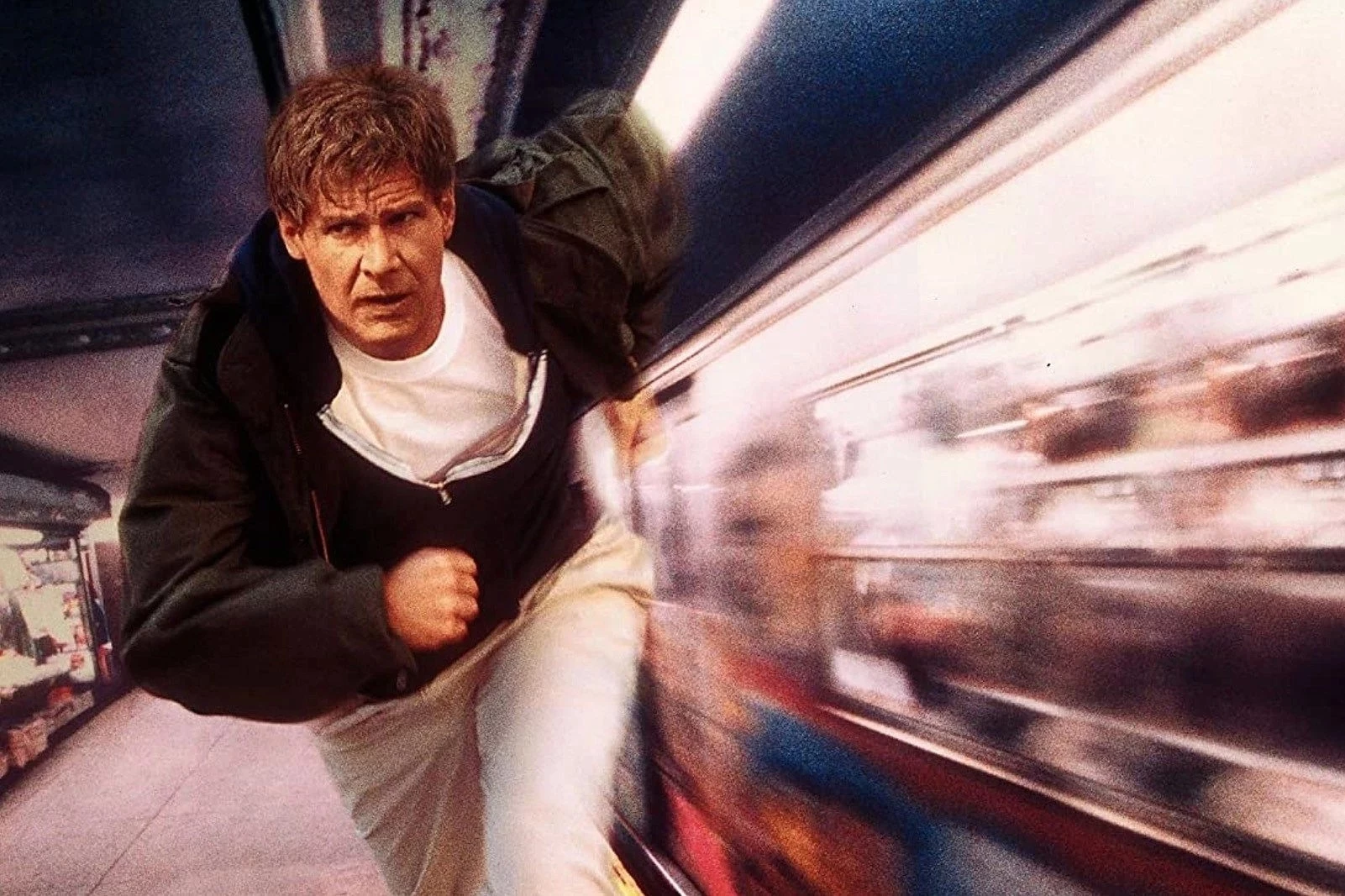
40. The Fugitive (1993)
It’s easy to overlook a genuinely fun movie when you’re focused on films with deeper meanings, but The Fugitive makes a large-scale chase film seem effortless. Actually, it’s remarkably well-made. The movie expertly combines a gripping mystery, exciting action, and outstanding performances – especially from Tommy Lee Jones as the relentless U.S. Marshal Sam Gerard. It’s so rewatchable because of the incredible skill and care that went into its creation, something that’s even less common in movies today than it was back in 1993.
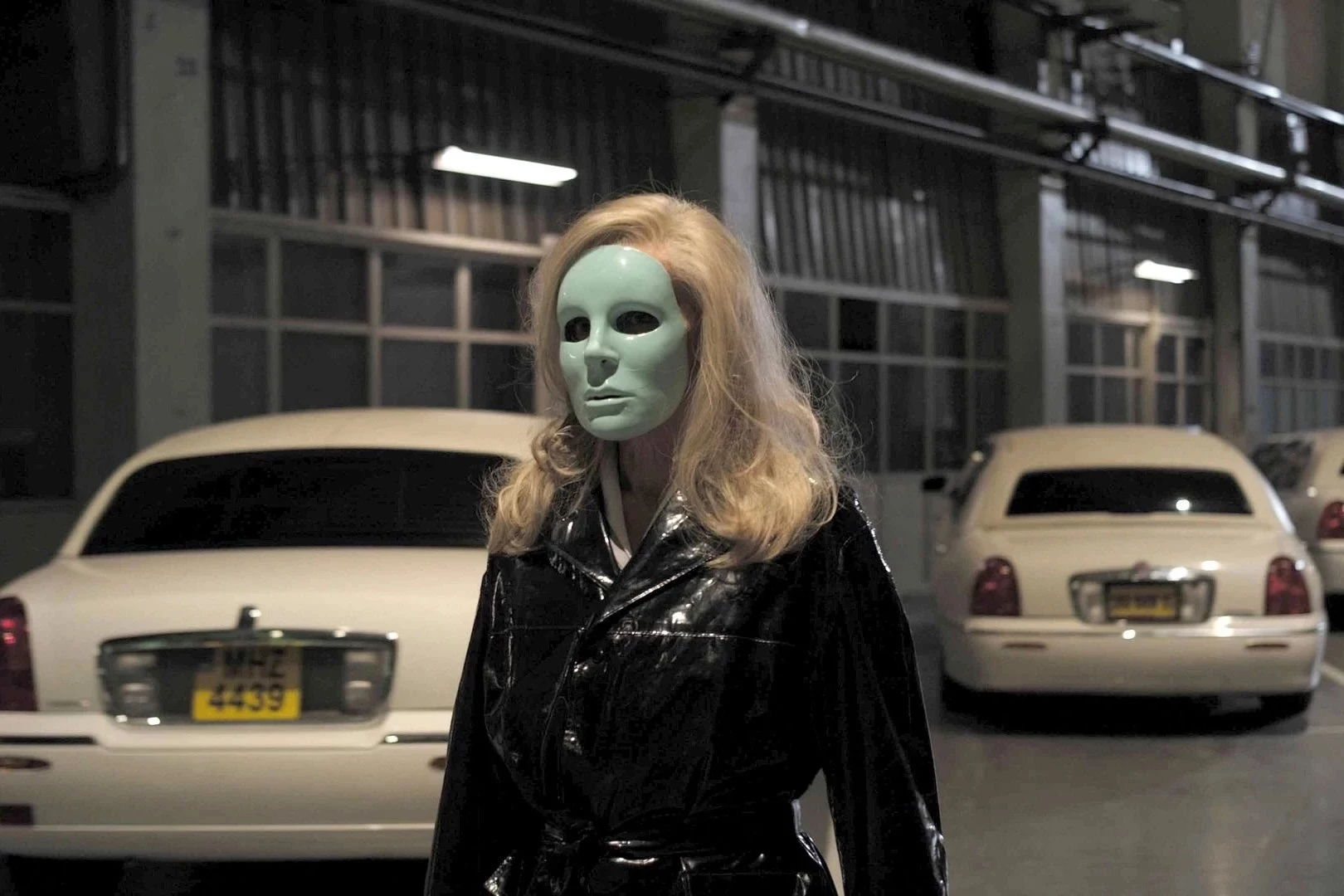
39. Holy Motors (2012)
Leos Carax’s Holy Motors feels like the most incredible dream you could have while awake. It’s a wildly imaginative and moving tribute to film, acting, and life itself—suggesting they’re all deeply connected. Denis Lavant delivers eleven remarkable performances as Oscar, a man who journeys through Paris in a limousine, constantly transforming into different characters—from a motion-capture performer to a gangster and even a beggar. While Oscar’s exact profession remains a mystery, the film powerfully demonstrates the enduring wonder and unrealized possibilities of cinema, especially at a time when how we watch movies is rapidly changing.
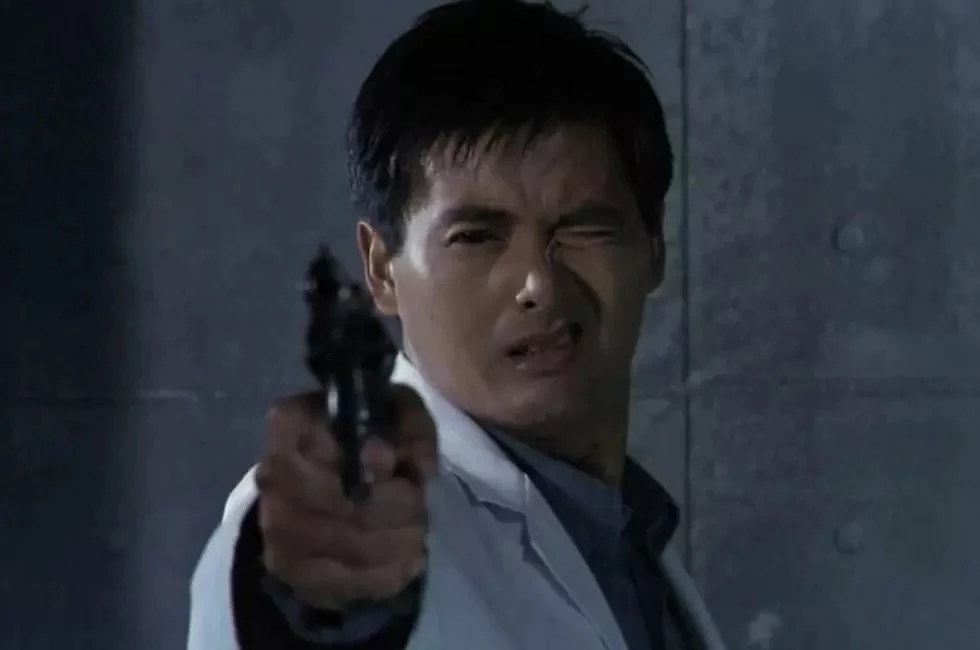
38. Hard Boiled (1992)
John Woo’s Hard Boiled begins with a simple scene: a drink being made. Tequila and soda are poured into a glass, then the glass is slammed onto the bar, mixing the ingredients. This seemingly small moment actually hints at the entire film’s core idea. The movie is about what happens when two very different people are brought together and collide. Both Chow Yun-Fat and Tony Leung are fantastic actors on their own, but when they work together, the result is explosive and unforgettable – pure movie magic.
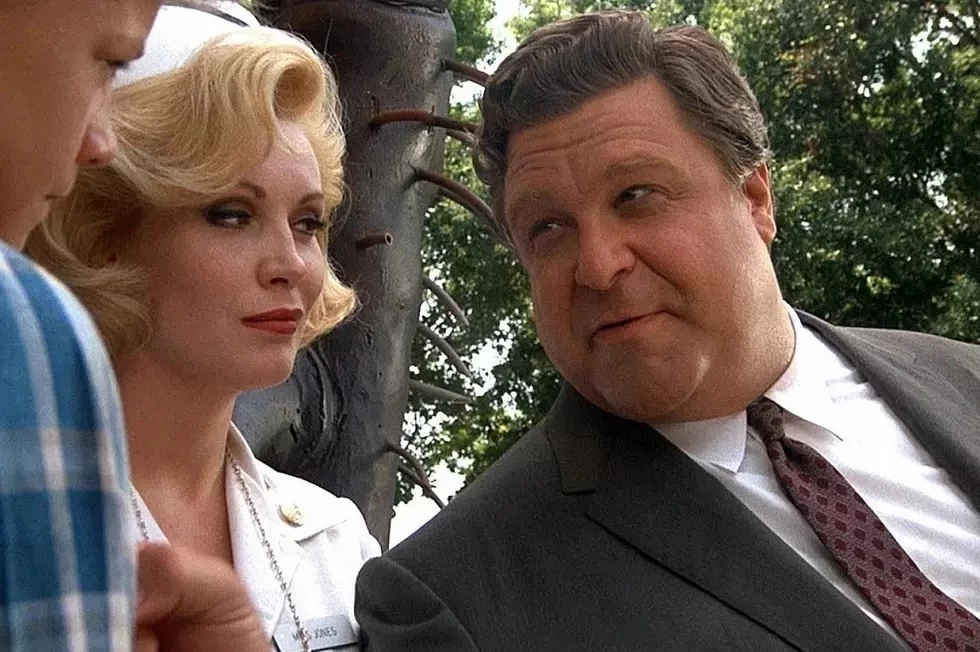
37. Matinee (1993)
Joe Dante’s Matinee isn’t just a trip down memory lane; it cleverly examines the difference between genuine fear and the cheap thrills offered by low-budget filmmakers like Lawrence Woolsey (played by John Goodman). It’s surprising how insightful a movie about a cheesy producer can be.
The film’s affectionate look at 1960s B-movies is balanced by a recognition of the harsh realities of the world, both then and now. The story centers on Gene (Simon Fenton), a teenager living with his mother and brother on a military base while his father is deployed during the Cuban Missile Crisis. With his mother often struggling, Gene effectively acts as a caretaker for his younger brother, Dennis (Jesse Lee). The family’s constant moves due to his father’s Navy job leave the brothers feeling like outsiders wherever they go. The local movie theater becomes their safe haven and source of joy amidst the instability.
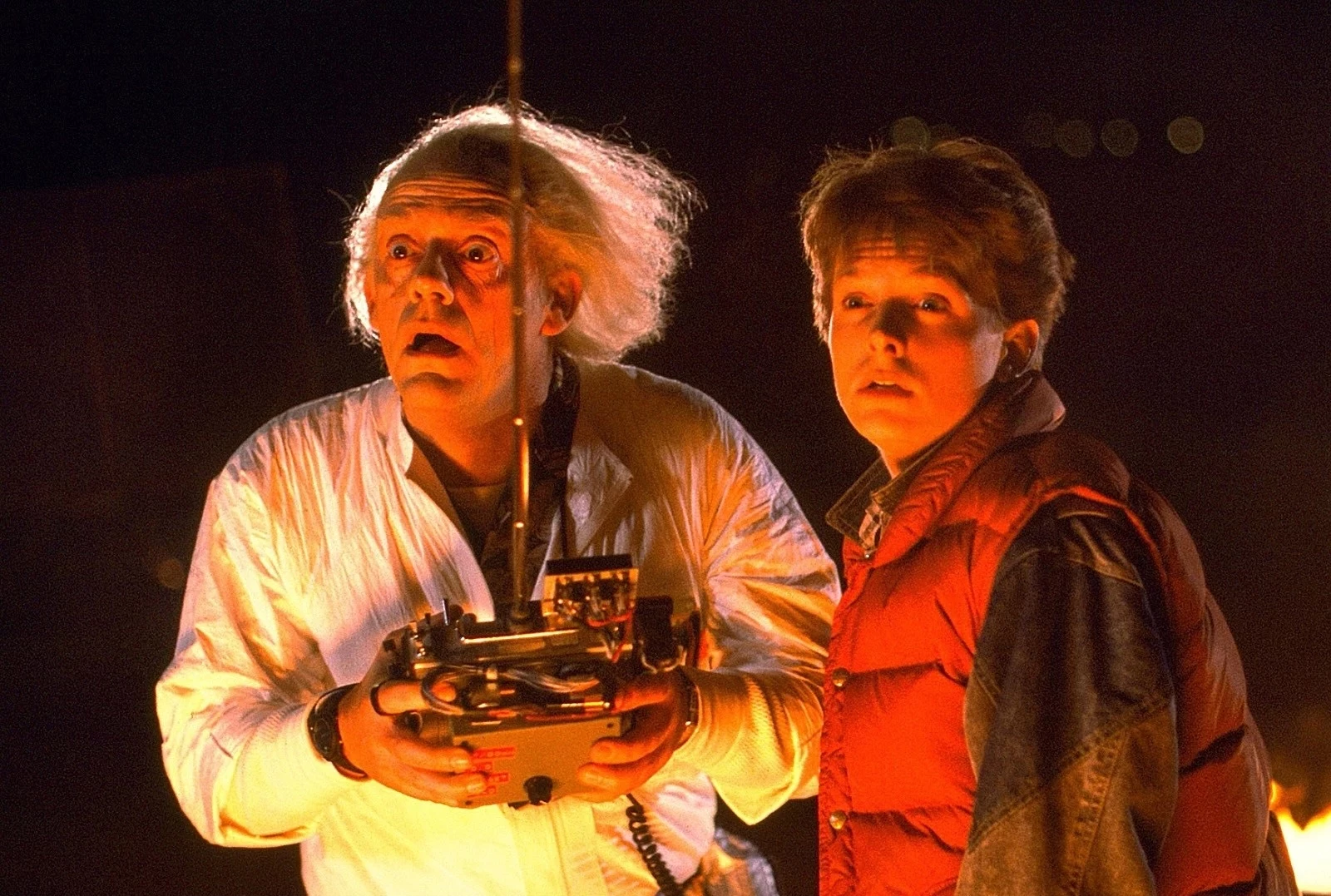
36. Back to the Future (1985)
The movie Back to the Future starts with a question many teenagers ask: what were their parents like when they were young? It uses this simple idea to create a brilliantly crafted story. Marty McFly, played by Michael J. Fox, is a carefree teen who travels back to 1955 in a time-traveling car invented by a quirky scientist. Once there, he accidentally interferes with his parents’ first meeting and must fix things to ensure his own future. With its humor, unique style, beautiful visuals, and fast-paced editing, Back to the Future is a nearly flawless example of 1980s blockbuster filmmaking.
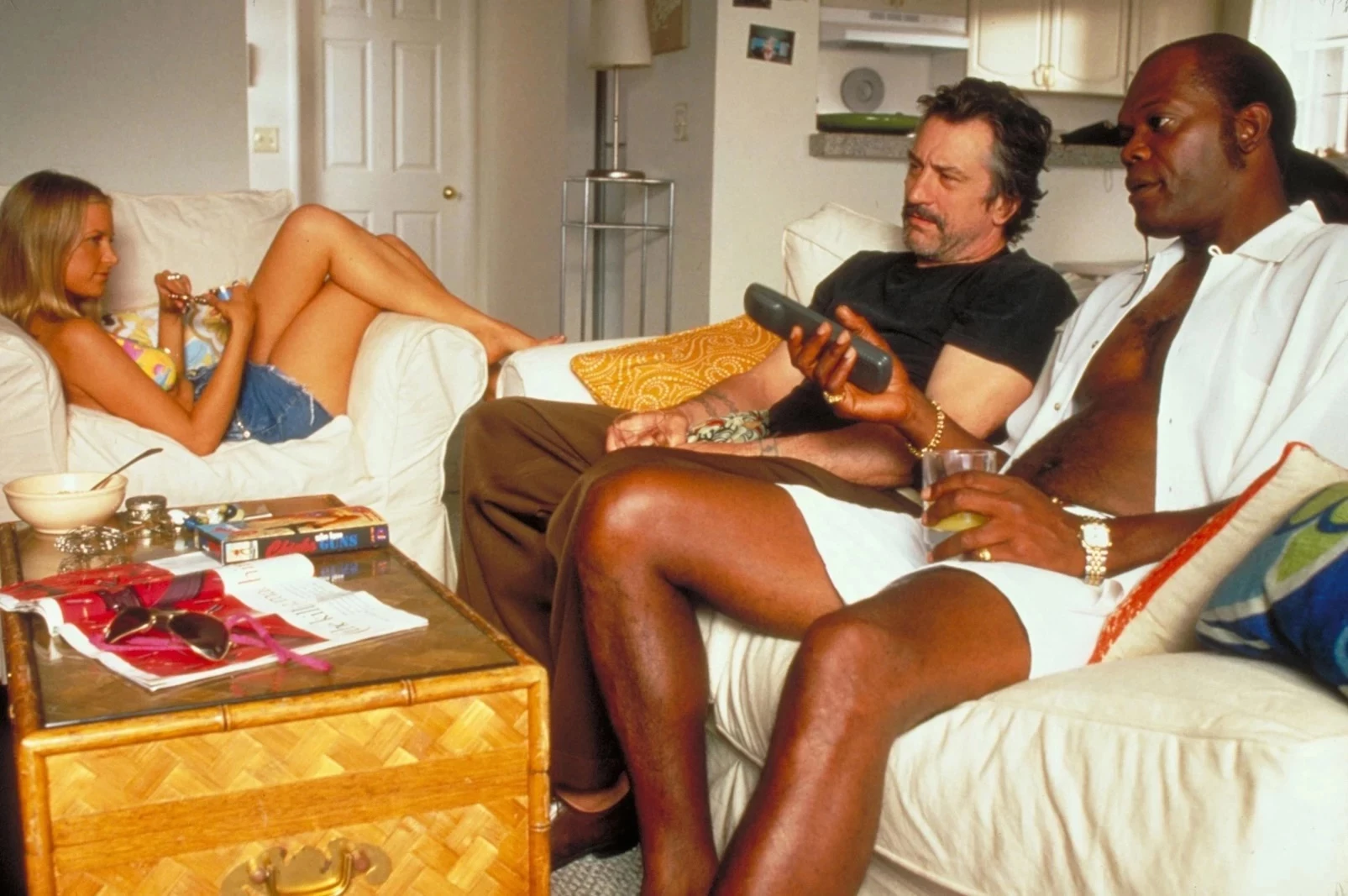
35. Jackie Brown (1997)
What I really appreciate about Jackie Brown is how flawed and realistic the characters are. Max Cherry isn’t a typical cool gangster; he’s just an ordinary guy who’s losing his hair. And Jackie Brown isn’t a criminal mastermind – we even see her practicing to look tough before a dangerous situation. Even Louis Gara has a relatable moment, forgetting where he parked during a robbery! They feel like real people, and I think some of Tarantino’s later films could benefit from that same level of humanity. When Jackie Brown first came out, some people were disappointed it wasn’t as flashy or complicated as Pulp Fiction, but Tarantino’s more subtle choices are actually what make it so good. The opening credits, reminiscent of The Graduate, immediately tell you everything you need to know about Jackie, and scenes like the one with Ordell and Beaumont are fantastic. Plus, the movie ends with a truly memorable kiss – not because it’s overly sensual, but because it feels genuine and imperfect.
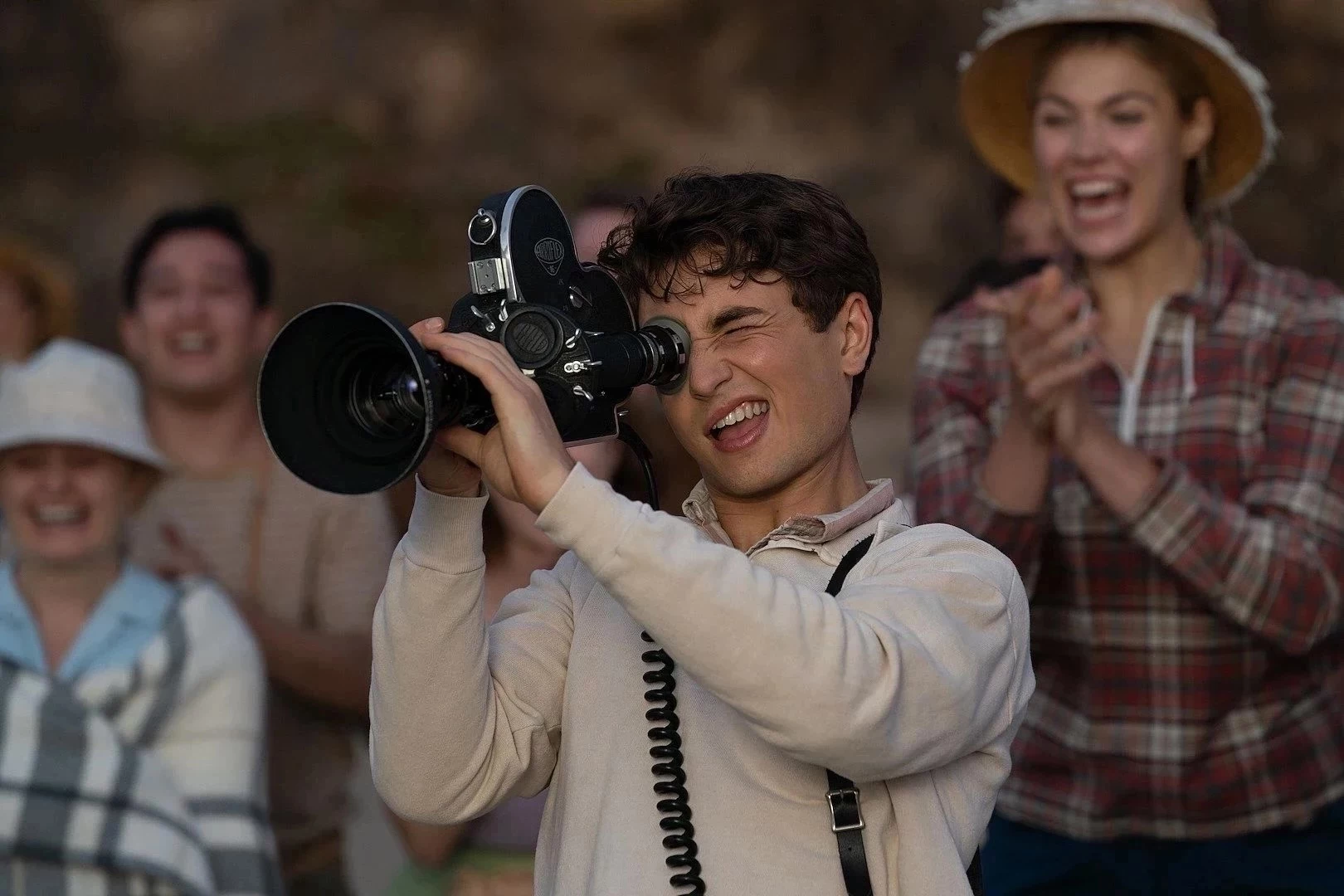
34. The Fabelmans (2022)
What truly stands out in The Fabelmans is Steven Spielberg’s enduring passion for film. Even decades after the events depicted, he still feels the same wonder and excitement that young Sammy Fabelman experienced when he first saw The Greatest Show on Earth and began making his own movies. Spielberg has become a master filmmaker, learning how to use visuals and sound to evoke a wide range of emotions. But he’s never forgotten why he makes movies in the first place.
The Fabelmans is Spielberg’s personal story, a look at the beauty and challenges of both filmmaking and life. Cinema provides young Sammy with a way to deal with his fears and loneliness, though it sometimes sets him apart. His growing interest in directing connects him with his creative mother, brilliantly portrayed by Michelle Williams, but also risks revealing a painful family secret. Now, after all these years, Spielberg has found a way to tell this deeply moving story, filled with life, love, joy, and sadness – everything that makes a great movie.
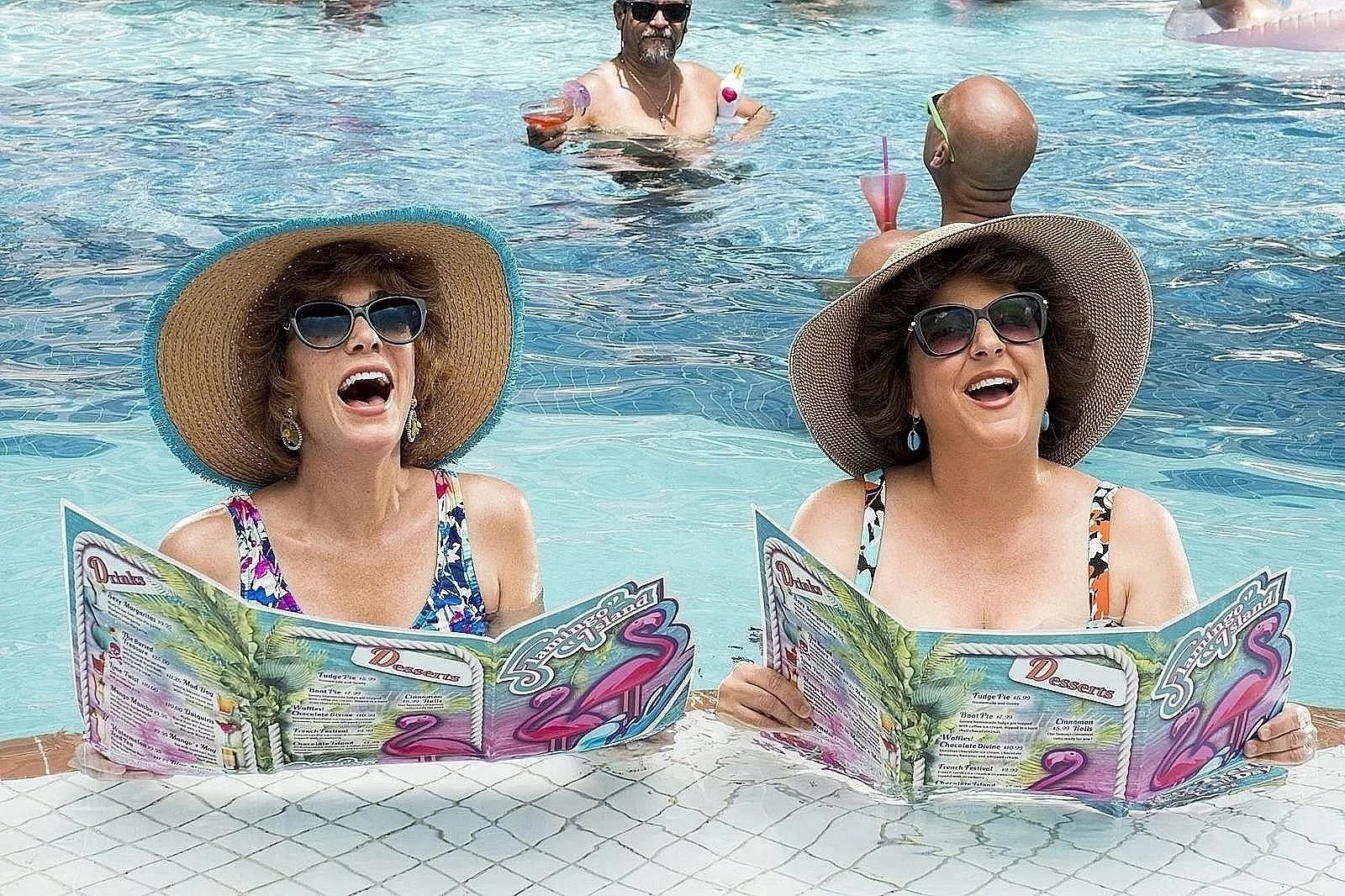
33. Barb and Star Go to Vista Del Mar (2021)
Kristen Wiig and Annie Mumolo, the comedic force behind Bridesmaids, reunited for another hilarious adventure in Barb and Star Go to Vista Del Mar. They play two best friends who lose their jobs at a furniture store in Nebraska and decide to spend their severance pay on a fun-filled trip to Florida. While there, they both fall for a handsome stranger (Jamie Dornan, playfully poking fun at his own heartthrob image) who is secretly involved in a ridiculous plot to unleash genetically-modified killer mosquitos on the town. Wiig and Mumolo are fantastic, delivering witty banter about everything from clothing to names, and the film’s lines are sure to become instantly quotable. In a world that often feels dark, Barb and Star arrived as a bright, sparkling escape – a welcome dose of joyful silliness.
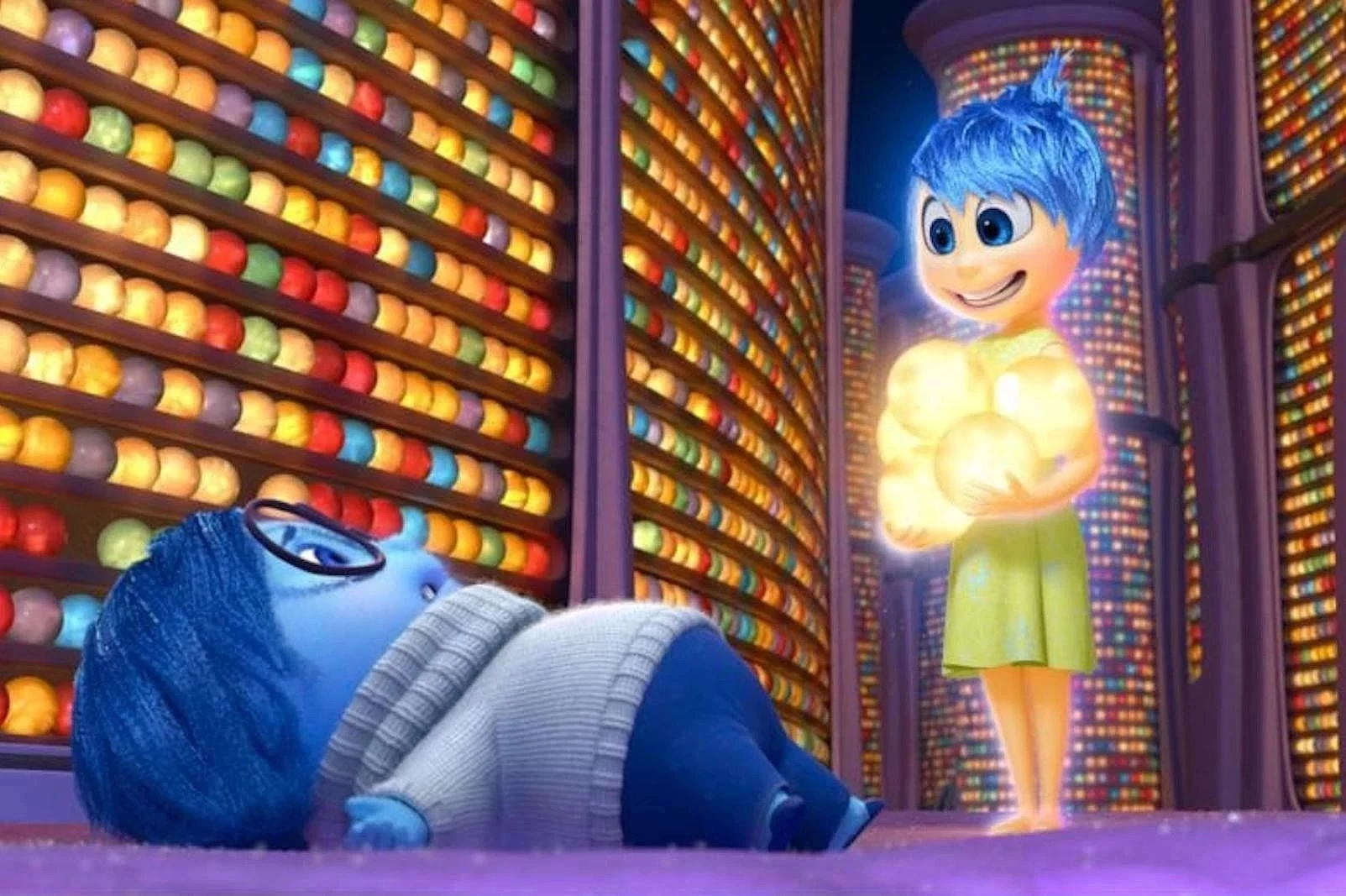
32. Inside Out (2015)
Even before becoming Pixar’s creative leader, Pete Docter was known as a brilliant storyteller. He contributed to the writing of beloved films like Toy Story, Toy Story 2, and WALL-E, and directed some of Pixar’s most acclaimed movies: Monsters, Inc., Up, and Inside Out. Inside Out is a remarkably creative film that explores the inner world of an 11-year-old girl named Riley. When Riley moves from Minnesota to San Francisco, her life is disrupted, leading to a conflict between the personified emotions within her brain. The film’s depiction of Riley’s mind is visually stunning and full of detail. Ultimately, Inside Out is a profoundly insightful film about the vital role of sadness and grief in our lives.
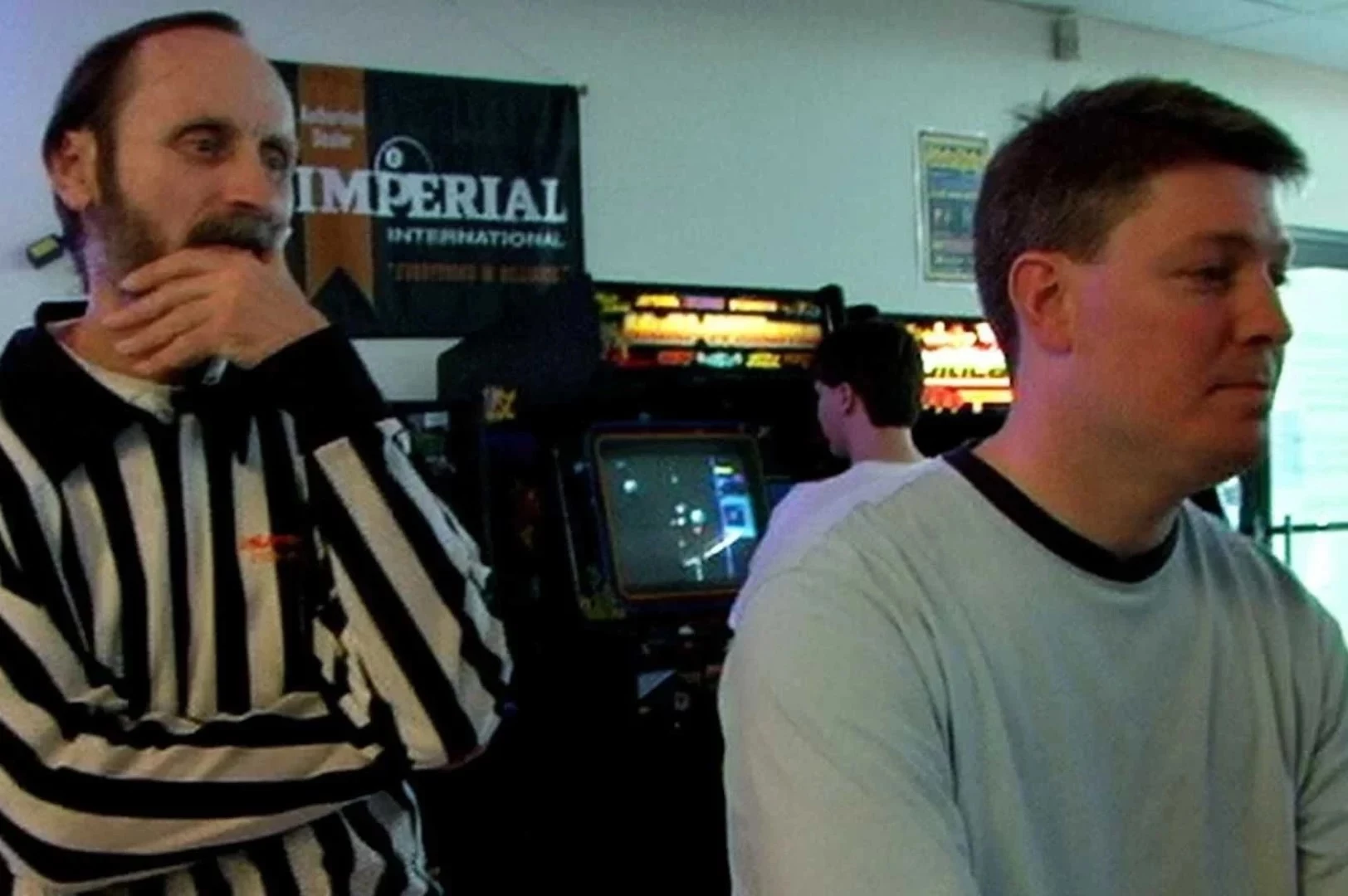
31. The King of Kong: A Fistful of Quarters (2007)
The classic video game Donkey Kong is a surprisingly accurate reflection of life itself. It’s incredibly challenging, often unfair, and success often feels like a matter of luck. You might triumph, but ultimately, failure is inevitable – even achieving a high score doesn’t change that. It’s a constant struggle where you can easily be overwhelmed by unexpected obstacles. And sometimes, life throws in bizarre complications, like a ruthless business owner with questionable fashion choices.
That’s why The King of Kong, a documentary about two men competing for the Donkey Kong championship, is about much more than just a video game. It’s a story about the human condition and the challenges we all face.
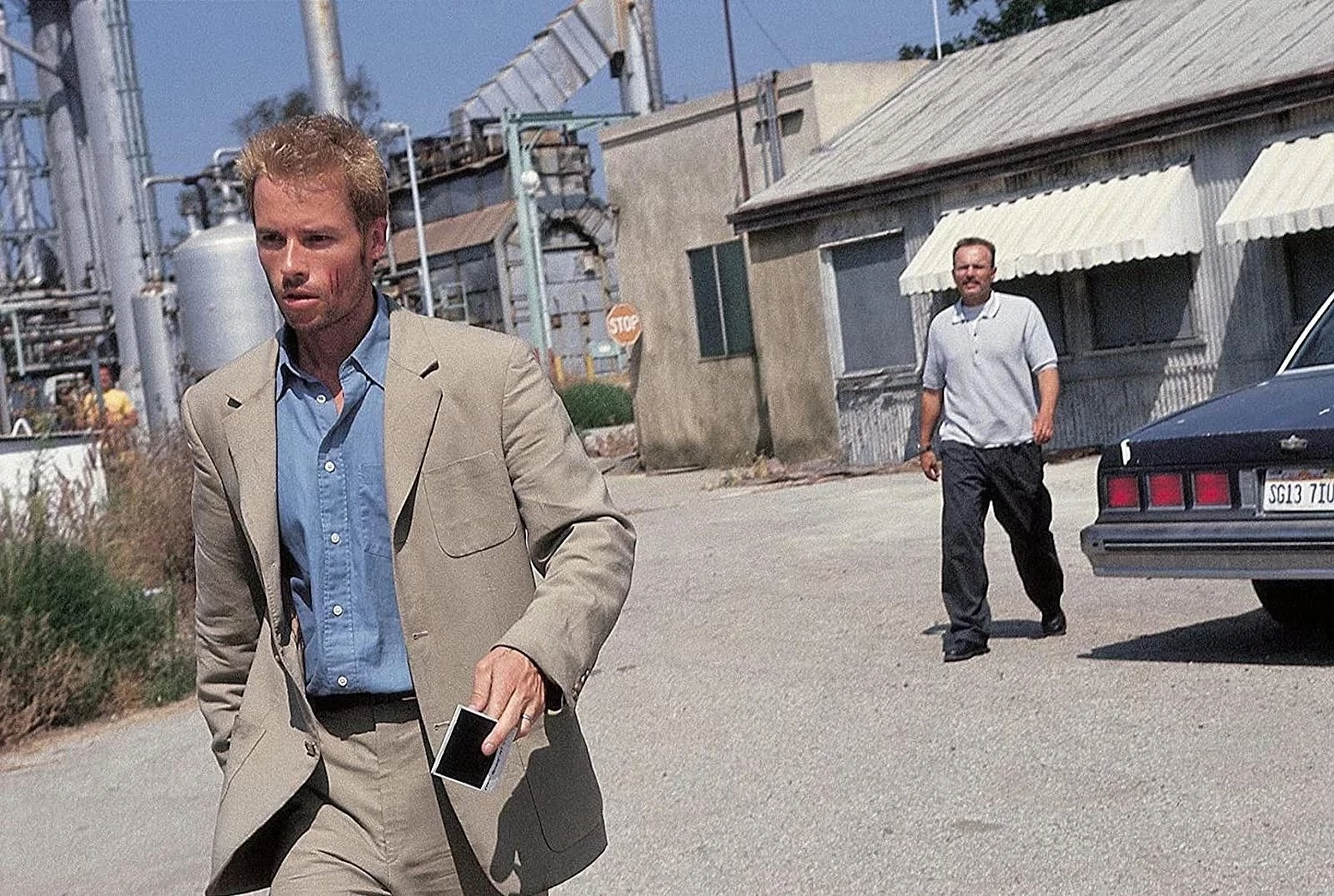
30. Memento (2000)
Don’t dismiss Memento as just a clever trick. While it’s true the film has a very complex structure – arguably one of the most complicated ever made – the way its timelines jump around isn’t just for show. It deliberately disorients the viewer, putting them inside the mind of Leonard Shelby (Guy Pearce), the film’s protagonist, who suffers from a rare form of amnesia that prevents him from forming new memories.
Leonard is driven to find his wife’s killer, and the film begins by seemingly showing him succeed, before unraveling the events that actually happened. Memento quickly established Christopher Nolan as a promising director, but the film’s power lies in its tragic portrayal of Leonard, a man desperately seeking meaning in his life. While Nolan continued to experiment with filmmaking techniques and explore similar themes in his later work, he largely left behind the dark humor present in Memento – from the confusing chase scene where it’s unclear who is chasing whom, to the ironic name of Leonard’s hotel, the “Discount Inn,” referencing his habit of dismissing the story of a man with a similar condition.
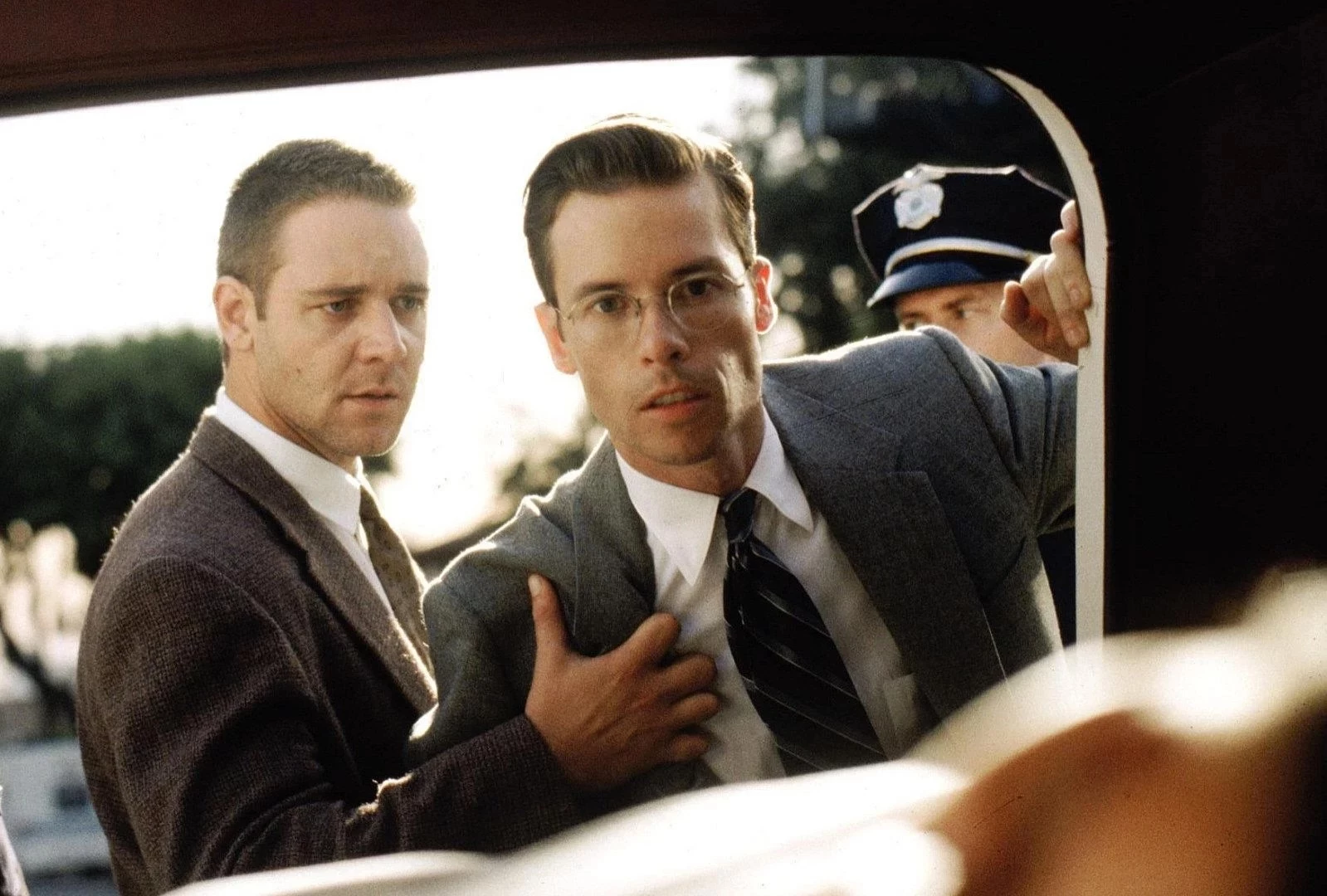
29. L.A. Confidential (1997)
Just how many layers of throwback references does L.A. Confidential have? The film is set in the 1950s, clearly inspired by the 1970s classic Chinatown, and was made in the late 1990s – a time when large-scale, expensive crime dramas with mostly unknown actors were still possible (only Kevin Spacey and Kim Basinger were already established stars). Like the novel by James Ellroy that it’s based on, L.A. Confidential reveals that the 1950s weren’t the idyllic era many believe them to be. As one character points out, that’s a carefully constructed image – the real story was largely hidden until Ellroy and director Curtis Hanson brought it to light.
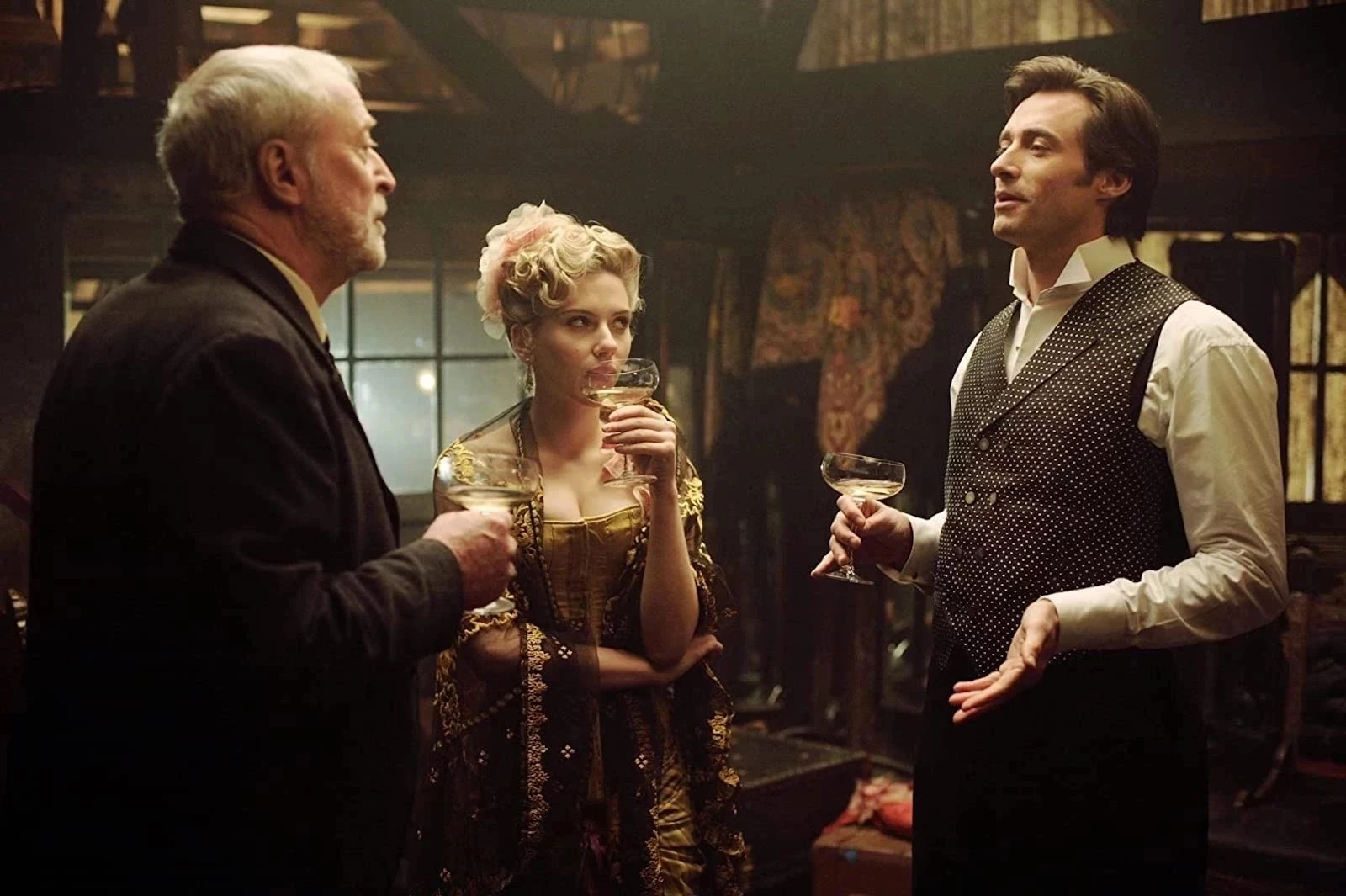
28. The Prestige (2006)
Christopher Nolan’s The Prestige perfectly blends his signature style – complex timelines, unexpected twists – with his recurring ideas about flawed heroes and loss. The film follows two competing magicians in Victorian London, played by Christian Bale and Hugh Jackman, whose rivalry pushes them to incredible feats – and ultimately, to murder. The Prestige is a story within a story, exploring the sacrifices artists make for their work and the inherent duality of human nature. It’s a film that rewards repeat viewings, revealing new layers of foreshadowing and detail if you pay close attention.
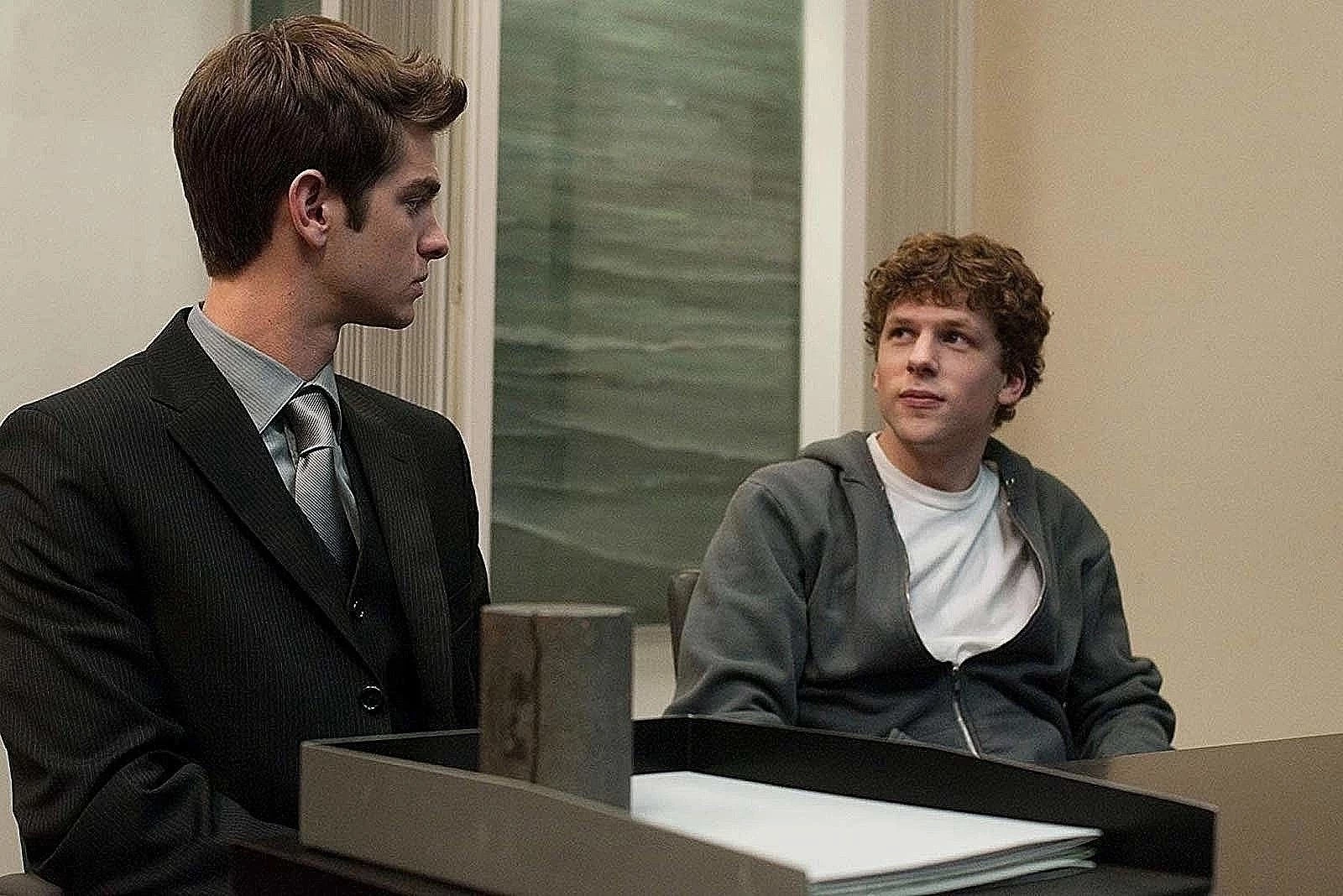
27. The Social Network (2010)
Whether David Fincher and Aaron Sorkin got the details of Facebook’s beginnings right is open for discussion. But they undeniably nailed a particular kind of personality, perfectly embodied by Jesse Eisenberg’s portrayal of Mark Zuckerberg: incredibly smart, but also frustrated, privileged, and craving acceptance. Many were confused by Fincher making a film about Facebook in 2010, but it now seems clear it was a spiritual follow-up to Fight Club, another story about a resentful, isolated man whose anger has unforeseen results. A crucial element of the film is Justin Timberlake as Napster founder and early Facebook executive Sean Parker – he’s essentially Zuckerberg’s rebellious alter ego. Timberlake and Eisenberg even share a similar look – they could be brothers if one had all the luck and the other none. That’s the person Mark Zuckerberg wants to be, and he’s tantalizingly close to achieving it.

26. Nickel Boys (2024)
As someone who watches a ton of movies, you see some really good ones, and occasionally a truly great one. But it’s rare to find something that genuinely feels fresh – a film that really breaks new ground. Then, every once in a while, you stumble upon something like Nickel Boys. It’s truly original, incredibly brave, and offers a unique perspective – actually, two unique perspectives.
That’s because the director, RaMell Ross, made this amazing choice to film almost the entire movie from the point of view of the two main characters. It’s astonishing work by Ross and the cinematographer, Jomo Fray, and it completely immerses you in the experiences of these two young men trying to survive a Florida reform school in the 1960s. Honestly, I’m still baffled Fray wasn’t nominated for an Oscar! It’s a technique that could easily feel gimmicky, but in Ross’s hands, it feels revolutionary. It genuinely feels like seeing the world with new eyes, and it might just give you a glimpse of what cinema could become.

25. Past Lives (2023)
This moving and poignant film explores the unseen connections that shape our lives – whether you call it fate, destiny, or simply the way things are. It beautifully illustrates how people can be drawn together and pulled apart, much like magnets. The story centers on Nora (Greta Lee) and Hae Sung (Teo Yoo), who share a powerful connection but struggle to find the right time and place to be together. They cross paths at different stages of life – as children, in college, and as adults – and each time, their lives have changed, yet their bond remains. Complicating matters, Nora is now married to Arthur (John Magaro). The film delicately portrays this love triangle, and its ultimately heartbreaking conclusion will leave you contemplating the defining moments and choices in your own life, and how their significance may only become clear with time.

24. Boyhood (2014)
For twelve years, director Richard Linklater secretly filmed scenes with the same cast and crew, documenting the life of a boy (Ellar Coltrane), his mother (Patricia Arquette), and his sister (Lorelei Linklater). While some might see this as a personal project for Linklater, the film actually offers a fascinating look at American life in the early 2000s, and the universal experiences of family – the love, struggles, and compromises. All movies deal with time, but Boyhood has a truly special connection to it. Seeing the actors genuinely age on screen makes certain moments more touching and others more meaningful. When Patricia Arquette reflects on her life at the end, her words carry the weight of twelve years of real emotions. As the late film critic Roger Ebert once said, “Movies are windows into our world.” And Boyhood feels like a film that throws those windows wide open.

23. Catch Me If You Can (2002)
Despite being a fun and lighthearted film, Catch Me If You Can is also a surprisingly thoughtful look at loneliness and the importance of family. The movie boasts a fantastic cast, including Leonardo DiCaprio as the clever con artist Frank Abagnale Jr., Christopher Walken as his struggling father, Jennifer Garner and Amy Adams as his romantic interests, and Tom Hanks as the persistent and serious FBI agent, Carl Hanratty.

22. Mad Max: Fury Road (2015)
With its relentless action, Mad Max: Fury Road is easily the best car chase movie of the 21st century. But beyond the thrills, it’s a surprisingly spiritual and even Biblical film. Think of it as a modern-day exodus story, with Charlize Theron’s Furiosa leading a group of women on a quest for a better life. Tom Hardy’s Max acts as their guide through the wasteland, helping them find safety but remaining an outsider. George Miller’s film proves that action movies can be both exciting and intelligent, and anyone who says otherwise is just trying to provoke a reaction.

21. Killers of the Flower Moon (2023)
At over 80 years old, Martin Scorsese continues to challenge himself and his viewers with his filmmaking. He still elicits amazing performances from actors and revisits familiar themes – the dangerous allure of wealth and the tragic side of American history. His latest film, Killers of the Flower Moon, focuses on the real-life “Reign of Terror” in the 1920s, where members of the Osage Nation were targeted after discovering oil on their land in Oklahoma. White neighbors, including Ernest Burkhart (Leonardo DiCaprio), who is married to an Osage woman (Lily Gladstone), exploit and harm the tribe. With each new film, it feels more and more true, but especially with Killers of the Flower Moon: if this is Scorsese’s last movie, it’s a stunning and fitting conclusion to a remarkable career.

20. Chungking Express (1994)
Beyond its memorable soundtrack, vibrant visuals, and captivating love stories, Chungking Express brilliantly portrays the feeling of city life. It captures the loneliness you can experience even in a crowded place, the longing for open spaces, the fleeting nature of connections, the simple joy of a good song in a bar, and the curious nature of people you encounter at night.

19. Boogie Nights (1997)
I absolutely loved Paul Thomas Anderson’s latest film! It’s a really moving and surprisingly funny look back at the golden age of the adult film industry in California. It feels like a breezy, nostalgic trip, introducing you to so many memorable characters – like the wonderfully tragic figure inspired by Burt Reynolds, and Julianne Moore’s heartbreaking portrayal of a woman at the center of it all. But it’s about more than just the industry, you know? It really captures a whole mood of 1970s America – the good, the bad, and everything in between. It’s a beautiful, messy, and totally captivating film.

18. Ran (1985)
Akira Kurosawa’s Ran is my favorite film of his. What makes it special is that it came later in his career and, unlike many of his other films, is in color. I love how he uses color—especially the vibrant costumes—to powerfully emphasize moments, almost like a dramatic finishing touch to each scene.

17. The Matrix (1999)
One of the few real benefits of getting older is revisiting movies and seeing how well they stand the test of time. I remember seeing The Matrix when it first came out with no idea what to expect, and it was such a thrilling experience that I can still picture the exact theater, auditorium, and even my seat! The trailers were promising, but the movie itself was truly captivating.
More than 20 years later, it still is. My only complaint about The Matrix is that it’s too engaging to have on in the background – you’ll inevitably get sucked in and end up watching it for the sixty-fifth time instead of getting any work done.

16. The Diving Bell and the Butterfly (2007)
2007 was a fantastic year for movies, but the one that really stuck with me was The Diving Bell & The Butterfly. It’s Julian Schnabel’s beautiful adaptation of Jean-Dominique Bauby’s memoir about living with locked-in syndrome. Bauby’s story, and how the film conveyed his message of embracing life, had a profound impact on me. I was so moved that I left the theater and proposed to my girlfriend that very day! Fifteen years and two kids later, I still think it was the right thing to do. I recently rewatched the film, and it’s just as powerful and inspiring as ever.

15. Die Hard (1988)
Does Die Hard really need an explanation as one of the greatest movies ever made? It’s obvious! Think about Bruce Willis’s amazing portrayal of John McClane, a New York cop just trying to enjoy a vacation, or the fantastic action direction by John McTiernan. Plus, it’s the perfect Christmas movie… with a lot of gunfire.

14. Close-Up (1990)
This groundbreaking Iranian film tells the story of a man who pretended to be a famous filmmaker and conned a family in Tehran. Director Abbas Kiarostami had everyone involved play themselves, blending real footage from the legal proceedings with recreated scenes from before he got involved. The film uniquely combines documentary and fictional storytelling, and its exploration of fame and social class is still considered exceptional.

13. The Truman Show (1998)
It’s easy to wonder if we’re living in a simulation. If not, the movie The Truman Show eerily predicted our current world – one where privacy is disappearing, advertising is everywhere, and people are constantly stressed and focused on superficial things. While the film is about a man unknowingly living in a reality TV show, the first half of the story is also a surprisingly relatable depiction of a mid-life crisis – that feeling of turning forty and questioning everything about your life.

12. Zodiac (2007)
David Fincher is known for directing films about serial killers, but Zodiac is more than just a crime thriller. It’s a look at San Francisco over several decades, seen through the perspectives of three men obsessed with solving the Zodiac Killer case. We follow a police inspector (Mark Ruffalo), rumored to have inspired the film Bullitt, a newspaper reporter (Robert Downey Jr.) who became a target of the Zodiac, and an amateur detective (Jake Gyllenhaal) unable to move on even after the killings cease. What Zodiac excels at, more than most crime movies, is showing how all-consuming an obsession can be. Fincher expertly draws viewers into the complex investigation with skillful camerawork and editing. By the film’s ending – which cleverly connects back to the beginning after a tense two and a half hours – you fully understand Robert Graysmith’s relentless drive.
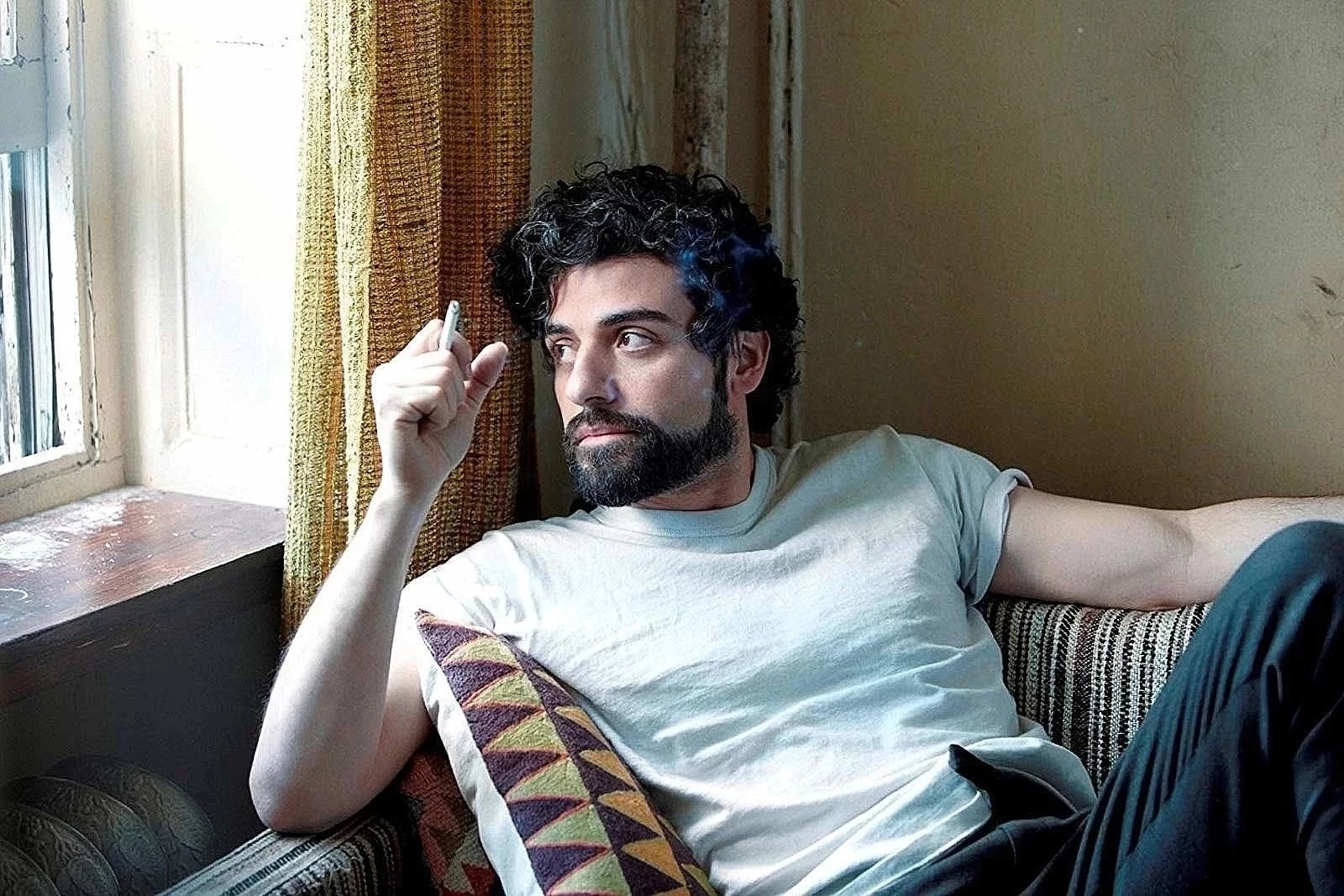
11. Inside Llewyn Davis (2013)
Many of the films Joel and Ethan Coen created together explore partnerships, and Inside Llewyn Davis is a particularly strong example. As I’ve discussed previously, the movie portrays the New York folk music scene of the early 1960s while also telling the story of a talented musician (Oscar Isaac, in a career-defining role) dealing with a series of unfortunate events after losing his musical partner. It’s noteworthy that Llewyn’s most beautiful song is about saying goodbye, and it feels incomplete when performed solo – highlighting the importance of the missing voice.

10.Lady Bird (2017)
Greta Gerwig’s film, Lady Bird, cleverly uses pairs and contrasts throughout the story. The main character, known as Lady Bird, has two first names, dates two different boys, and has two best friends. The film covers two semesters of her high school life, each featuring a school play and a dance, along with two parties. She navigates unique relationships with both of her parents and considers applications to two colleges while attending two different churches. This constant presentation of choices makes Lady Bird a deeply relatable movie about the weight of decisions – especially when you’re young and everything feels incredibly important. In many ways, those decisions truly are.

9. Eternal Sunshine of the Spotless Mind (2004)
I can’t recall exactly when or where I first watched Eternal Sunshine, but it was around 20 years ago while I was living in New York City. The details of that first viewing have faded with time, like so many memories do. Ironically, that makes me appreciate the film even more now. What’s so compelling about Eternal Sunshine of the Spotless Mind is how it uses a science fiction idea – a couple erasing each other from their memories – to explore the reality of how memories naturally fade. Jim Carrey and Kate Winslet create one of the most memorable couples in film history, largely because their relationship is destined to fail. Ultimately, all relationships end, and in a way, it’s like watching a beach house slowly fall into the ocean.

8. Pulp Fiction (1994)
While Pulp Fiction may not be the most copied film of the 1990s today, it was hugely influential for a time. The fact that so many attempts to copy it were so bad actually highlights just how talented Quentin Tarantino is, both then and now.
Pulp Fiction is a strange mix of things that somehow all come together. It’s a grand story about crime in Los Angeles, but also a deep look at the characters involved. It jumps between wildly over-the-top scenes—like mysterious briefcases and secret clubs—and incredibly ordinary moments, like conversations about foot rubs and fast food. It’s both large in scope and small in its focus, funny and sad, violent and cartoonish. That’s what makes Pulp Fiction so unique.

7. Do the Right Thing (1989)
Spike Lee’s film, set during a scorching summer day in Brooklyn, powerfully explores racial tensions and, unfortunately, still feels incredibly relevant today. The story centers around a neighborhood and a local pizzeria that becomes the focal point of unrest after a Black man is killed by police. A key question the film poses is whether the character Mookie made the right decision when he threw a trash can through the pizzeria window – and perhaps the very act of asking that question is more important than any definitive answer.

6. American Movie (1999)
I have to say, American Movie is a film that’s stayed with me for years. What appears to be a straightforward, and often hilarious, documentary about a filmmaker named Mark Borchardt trying to finish his movie quickly becomes something much more profound. It’s a really touching, even heartbreaking, look at chasing your dreams and the frustration of not quite reaching your goals. Mark is so articulate about his need to create, and you genuinely root for him, even as things keep falling apart. Beyond that, it’s a beautiful story about friendship, showing how Mark leans on his friend Mike to make these incredibly low-budget films. Honestly, it’s a blast to watch when you’re younger, but it hits so differently as you get older. It’s easily one of the best American films I’ve ever seen.

5. Take Shelter (2011)
Having experienced panic attacks myself, I believe Take Shelter is a truly exceptional film about living with anxiety. The movie centers on Curtis LaForche (Michael Shannon), a family man who, despite a loving wife and daughter, is plagued by terrifying nightmares of devastating storms and a constant feeling of impending doom. Michael Shannon delivers a phenomenal performance, brilliantly supported by Jessica Chastain as his wife, and the film accurately portrays the vicious cycle of fear – Curtis worries he’s losing his mind, a concern fueled by family history, and that worry only intensifies his anxiety. While many see the film’s ending as open to interpretation, I see it as a natural conclusion. The film powerfully demonstrates that this type of anxiety can’t be overcome or blocked out, even by trying to protect what’s important. It can only be managed and understood, especially with the help of those you love.
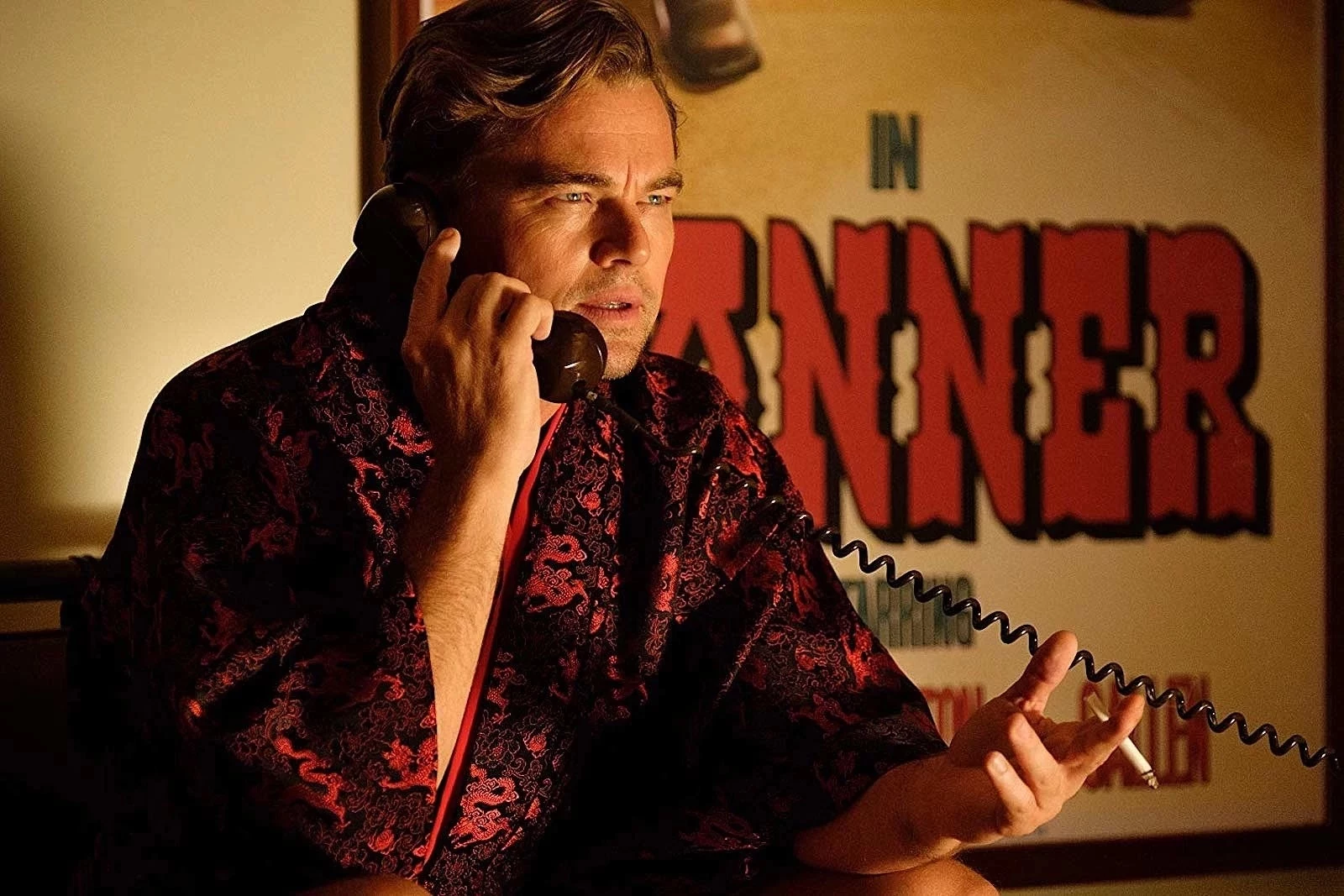
4. Once Upon a Time in Hollywood (2019)
Actor Rick Dalton and his stuntman, Cliff Booth, have lunch with producer Marvin Schwarz at the Musso & Frank Grill. Marvin suggests Rick star in Italian Westerns, but Rick is deeply disappointed, feeling like his career is over. He’s visibly upset, breaking down in tears as soon as he leaves the restaurant. Director Quentin Tarantino emphasizes Rick’s despair with a dramatic camera angle, showing the towering “Oldest in Hollywood” sign above him and Cliff.
While Rick isn’t actually old news, he certainly feels that way in that moment, realizing his time in the spotlight might be running out. Once Upon a Time in Hollywood is a brilliant film, full of clever details like this. It’s a look back at a changing time in America and a celebration of filmmaking, an art form that itself feels like it’s facing an uncertain future.

3. Groundhog Day (1993)
Few comedies are as insightful as Groundhog Day. Bill Murray delivers a standout performance as Phil Connors, a self-centered TV weatherman who, while covering the Groundhog Day event in a small Pennsylvania town, finds himself stuck in a time loop. The film essentially tells the story of a man who initially believes he’s all-powerful, gradually evolves, and ultimately discovers what it means to be human.

2. Goodfellas (1990)
Even thirty years after its release, Martin Scorsese’s Goodfellas is widely considered one of the best and most influential films of the 1990s. It’s a fantastic pairing with his more recent film, The Irishman, if you’re up for a long movie marathon! The film chronicles the life of a young man (played by the late Ray Liotta) as he climbs the ranks of the mafia, showing how quickly fortunes can change – one moment enjoying lavish meals, the next reduced to simple fare. Everything about the movie – the acting, script, editing, cinematography, and music – is flawless. It’s hard to believe Dances With Wolves won the Best Picture Oscar over Goodfellas.

1. Hoop Dreams (1994)
The documentary Hoop Dreams is about far more than just basketball. It follows its subjects through high school graduation, not their final games, and highlights the powerful influence of money, as pointed out by Spike Lee when discussing the pressures on young athletes. The film ultimately shows two separate ‘games’ happening: the one played on the court, and a more manipulative one played by those around the players – coaches and scouts. It leaves you wondering what options William and Arthur had, and what else they could have hoped for.
Read More
- When Perturbation Fails: Taming Light in Complex Cavities
- FC 26 reveals free preview mode and 10 classic squads
- Jujutsu Kaisen Execution Delivers High-Stakes Action and the Most Shocking Twist of the Series (Review)
- Fluid Dynamics and the Promise of Quantum Computation
- Where Winds Meet: Best Weapon Combinations
- Dancing With The Stars Fans Want Terri Irwin To Compete, And Robert Irwin Shared His Honest Take
- 3 PS Plus Extra, Premium Games for December 2025 Leaked Early
- Why Carrie Fisher’s Daughter Billie Lourd Will Always Talk About Grief
- Hazbin Hotel season 3 release date speculation and latest news
- 7 Most Overpowered Characters in Fighting Games, Ranked
2025-10-24 20:38